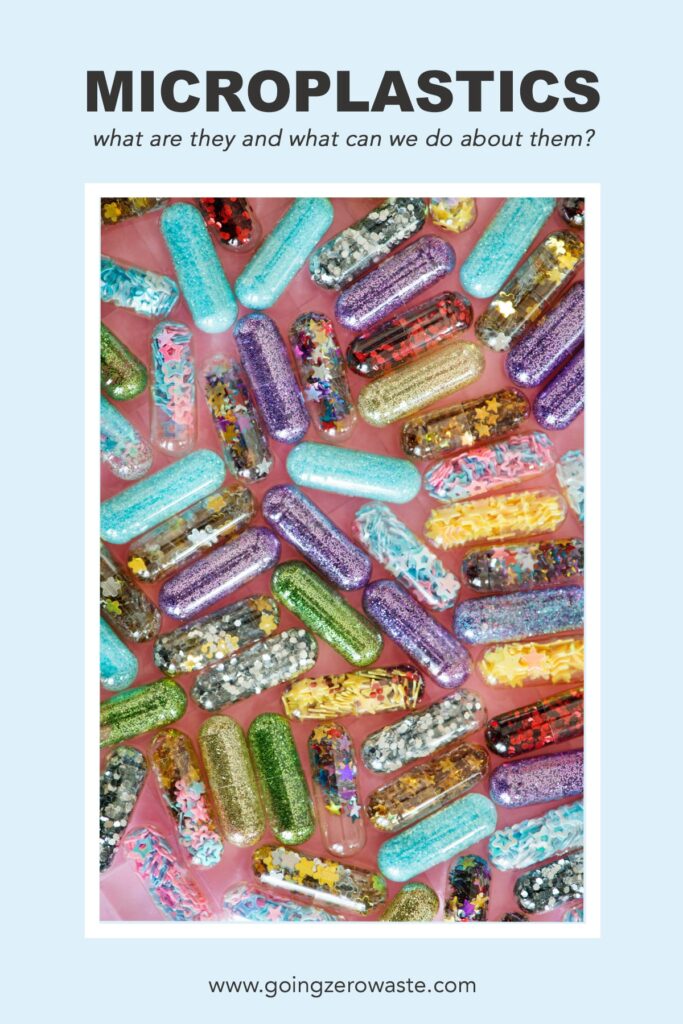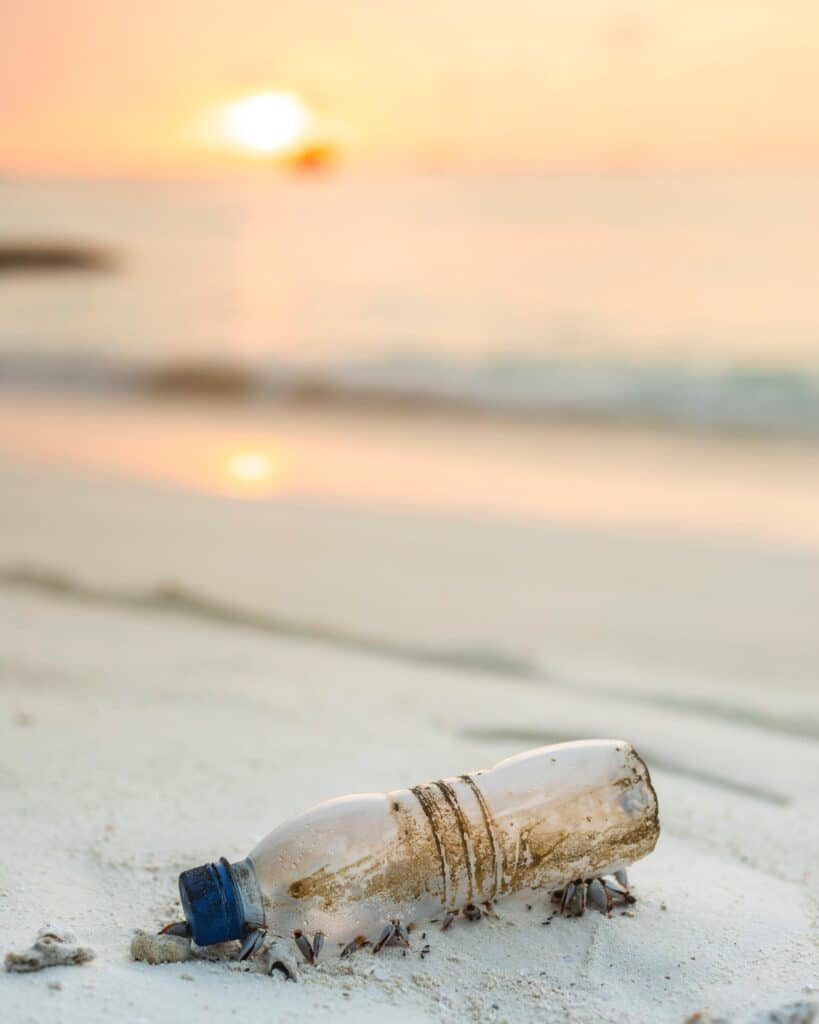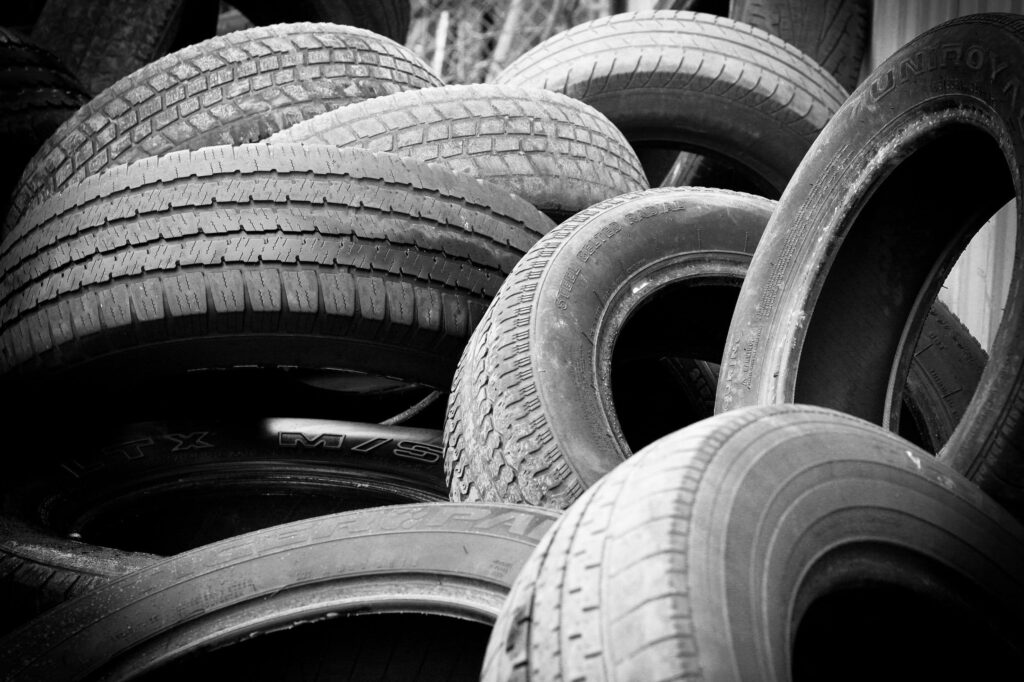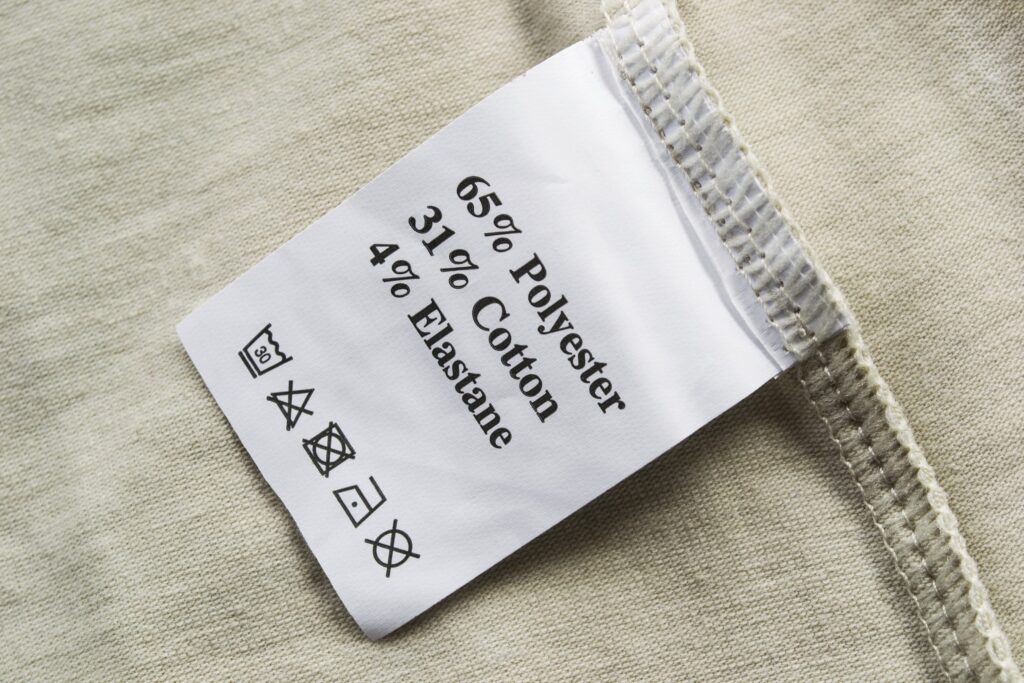How to Avoid Microplastics in Clothing and More
Is It Really Eco Friendly?
February 19, 2019 | Kathryn Kellogg
Last Updated on July 7, 2023
A more sustainable future hinges on society learning how to avoid microplastics. Microplastics — I like to think it’s the buzzword of the year. This might be grossly inaccurate, but I do think recognition of this problem is picking up steam after several damning studies have been released.
To understand how to avoid microplastics, you must first understand: what are microplastics and where do they come from? Clothing made from recycled plastic seems like a good alternative, but you have to understand what happens to those plastics every time you do a load of laundry. Fabric made from recycled plastic is an excellent start when rethinking single-use plastics — but it has its own problems. Read on to learn how to avoid microplastics in future generations.

Table of Contents
the effects of plastic fabrics and more
Some of those concerning studies about how plastic fabrics and other unexpected sources of microplastics include:
- Microplastics in human poop
- Nearly every sea bird has ingested plastic
- Plastic found in gut of every sea turtle
- Microplastic in drinking water worldwide
- Microplastics in 90% of salt
the problem with plastic & how to avoid microplastics
There’s a lot to process up there. Plastic has currently found its way through the food chain.
Without any long term studies, we really don’t know what this is doing to our bodies.
Plastic is a known endocrine disruptor, often masquerading as estrogen in the body, which interferes with our hormones and the body’s communication system.
Synthetic estrogens are known to cause problems like obesity, cancer, and infertility. You can read more in this study.
Beyond plastic’s hormone interfering properties, another study was released finding that plastic acts as a sponge for bacteria.
“Some laboratory studies have found that microplastics can interfere with feeding, digestion, and reproduction in several aquatic species.
“While microplastics may physically harm organisms, there’s also concern that they could leach chemicals such as plasticizers, UV stabilizers, flame retardants, and colorants. In addition to what’s in them, microplastics have also been found to attract pesticides and other toxic chemicals in water.
“Mason says her team has found environmental contaminants that are known carcinogens, such as polycyclic aromatic hydrocarbons (PAHs) and polychlorinated biphenyls (PCBs), in higher concentrations in plastic particles relative to the water.” Read More
Check out this blog post on the problem with plastic.

what are microplastics and where do they come from?
So what are microplastics and where do they come from? A microplastic is an extremely small piece of plastic — on average 3mm-5mm. Some plastics are born microplastics and others become microplastics.
See, plastic doesn’t ever go away.
Plastic won’t biodegrade. It won’t turn back into soil. Instead, over time, it becomes brittle and it breaks up into smaller and smaller pieces until it’s so small it’s a microplastic or nanoplastic.
But, some plastic starts out already small like glitter and microbeads. Some of the other prevalent forms of microplastics are tires and microfibers from clothing.

glitter:
Yep, glitter is plastic. Glitter face masks, sunscreens, festival makeup looks…. this is all plastic.
When you go to wash all of that glitter off of your body, it goes straight down the drain and into the waterways. Because glitter is so small, it can’t be filtered out — making it’s way out to the ocean.
SOLUTION:
First, ask yourself if you really need to use glitter.
I’m not sure I’ve ever been in a situation where I just HAD to use glitter. But, they do make biodegradable glitter which is made from cellulose, so it breaks down very quickly once you wash it off.
This brand donates portions of its sales to Greenpeace International.
microbeads:
Microbeads have mostly been banned. It would be pretty difficult to find products with microbeads in them now, but they were a major contributor to microplastics in the ocean.
I was surprised to learn that the first state to ban microbeads was Illinois back in 2014. In 2017, a ban passed at the federal level, adding the US to a long list of countries that have banned the bead.
SOLUTION:
Opt for microbead-free products — which should be very easy, since most products aren’t manufactured with them anymore.
tires:
Now, this one absolutely shocked me. I was attending the Sustainability Forum at the Phoenix Open when Dr. Leyla Acaroglu, an industrial designer and sociologist, dropped this piece of knowledge: tires are the number one source of microplastic pollution in the ocean.
According to The Guardian, “68,000 tonnes of microplastics from tyre tread abrasion are generated in the UK every year, with between 7,000 and 19,000 tonnes entering surface waters.”
Our tires go bald due to the friction of driving. As they go bald, they lose tiny bits of tire tread which are left on the roadways. And those bits eventually make their way to the storm drains, which lead out to the sea.

SOLUTION:
This one is so tough. Driving less is the best solution. But even if you’re taking public buses or biking, there’s still a problem with tires shedding microplastic pieces.
It’s probably time for the tire to get a makeover… which it has. Michelin has just introduced a biodegradable and 3-D printed tire that would last forever. Let’s hope this becomes a reality!
microfibers & clothing made from recycled plastic
Lastly, microfibers are shed into the waterways every time we wash our synthetic clothing made from polyester, acrylic, and fleece.
A study by Plymouth University found that a single load of clothes could release up to 700,000 microplastic particles.
It’s becoming more and more popular to create clothing made from recycled plastic water bottles. It sounds like it should be a great solution to reusing single use plastics, but unfortunately, washing these clothes released microfibers into the waterways. This means that even plastic fabrics result in microfiber pollution in the waterways.
SOLUTION:
This is a multi-pronged solution.
1) Wash Less: Try to stretch the time between washes. Just because you’ve worn something once, doesn’t make it dirty. If my clothes don’t smell, then I wear them… until they do smell. Only then do I put them in the washing machine.
2) Air It Out: A great way to extend the life of your clothes is to let them air out. After I’ve worn a shirt, I like to turn it inside out and spray it with this mixture, then hang it up in the open air like on the door frame of the closet.
Don’t shove the piece back in the closet — give it room to breathe so air can circulate all around it.
3) Opt for Natural Fibers: I try to buy clothing made from natural fibers. It can be really hard since spandex is in almost everything, but I look for at least 90% natural fibers when I check the tags on clothing.
4) Take Preventative Measures:
I do not have a 100% plastic-free wardrobe — especially when it comes to undies and workout gear. Check out this post to learn more about sustainable and ethical workout clothing. I speak a bit there about the polyester conundrum when it comes to workout clothing.
In this case, I try to take preventative measures by using something to catch the microfibers. There are several different options like the guppyfriend or a microfiber ball.

natural fibers that don’t shed microplastics
When you’re shopping, look for natural fibers on the product tags. Most of these fabrics have pros and cons. If you’re interested in a whole blog post about each of the fabrics, I can do that — but for the sake of not making this a novel, here’s a quick list.
I’m sure I’m missing a few, so please let me know in the comments section!
- Cotton
- Wool
- Silk
- Hemp
- Linen
- Rayon
- Viscose
- Bamboo
- Lyocell (Tencel)
- Modal
- Cupro
For me, I just can’t stand synthetics on my skin. Polyester and acrylic fabrics, which are plastic, aren’t breathable. They’re not able to regulate body temperature well.
These types of fabrics don’t keep you very warm in the winter, and they can’t keep you cool in the summer. They make you sweat more, ultimately increasing the amount of laundry — my LEAST favorite thing. Non-plastic fibers are the way to go!
faqs
I recently sourced questions from my Instagram stories on microplastics, and I’m going to do my best to answer them here. Hopefully, they will give you some solutions on ways that you can help reduce your contribution to microplastics.
what about shoes made from recycled plastic water bottles?
I definitely don’t have as much of a problem with items that aren’t going to be put through the washing machine over and over again. I think it’s a really innovative use for recycling plastic as many of our shoes are made from virgin plastics.
can you tell just by looking if a fabric is made from recycled plastic and will cause microfibers?
Not normally. High quality polyester and the like can look and feel very similar to silk or other natural fibers. It can be really tricky! So just to be safe, always check the label. Acrylic and fleece jackets are two of the worst offenders, so those are the two items I’d avoid at all costs.
In addition to avoiding synthetic fabrics when possible, also avoid products with labels stating the fabric was made from recycled plastic as a selling point.
what natural fibers do you go for and what are your fav stores to get them from?
If I’m buying secondhand, I don’t particularly care what the fabric is as long as it’s on the list above. If I’m shopping firsthand, I opt for tencel (a zero waste fabric!), modal, silk, and ethical wool. I also look for non-toxic dyes. Amour Vert is one of my favorite shops (big surprise, right?), because I feel really confident that whatever I buy there will be non-toxic and sustainable.
I will work on a full blog post all about this though.
What should I do with old clothes that I’ve stopped wearing because they aren’t made of natural fibers?
There’s not much you can do with them. They’re not very valuable, and it’s not really possible to turn them into other products at this time. But, that could be changing. A company in Hong Kong just found a way to infinitely recycle polyester, so we’ll see!
What about undergarments and swimsuits?
I wrote a whole blog post about ethical and sustainable underwear brands for you to check out.
Swimsuits fall in the same category as workout gear. Because they require stretch, plastic fabrics are ubiquitous in these garments. It’s pretty much unavoidable, but we typically don’t put swimsuits through rough spin cycles in our washing machines.
I haven’t found any data on hand washing vs. washing machines, but I believe the crux of the problem lies with the washing machine. While I’m sure microfibers shed from hand washing, I don’t think it would be as extreme as it is with machine washing.
Organic cotton vs. conventional?
If I’m buying firsthand, I always try to opt for organic cotton. You can read more in this post: All Your Questions About Eco-Friendly Cotton Answered
I hope this article has provided a little bit of insight into microplastics, microfibers, and ways that you can tackle the problem.
Of course, I can’t let you go without saying you should contact your representative about this issue! Send them an email, fax, or give them a call.
This is a super hard subject to tackle. Is it possible that we see polyester, acrylic, or fleece banned from the marketplace? What about non-biodegradable glitter? Maybe all washers should come with microplastic filters on the machines?
I’m not entirely sure what solutions could help prevent the problem even more, but it certainly wouldn’t hurt to let your representative know that it’s a subject you feel passionate about.










Thank you for the great write up! I would be very interested in separate blog posts about each fabric. 🙂 Starting to explore secondhand clothing via thrift shops and Thredup and sometimes it can be overwhelming trying to figure out all of the fabric pros and cons.
This is an awesome post, thank you!
1) I would love to read an article on non-plastic fiber pros and cons. You should definitely write!
2) I’ve bought a couple pairs of "water bottle" shoes, and I haven’t had issues with smell (any more than normal shoes). However, the brand does promote the fact that they can just be thrown in the wash… hadn’t thought about the fact that I would be creating more micro-plastics. Will definitely only hand wash those from now on.. or just be lazy and spray them down with a hose. 🙂
I’ve used my guppybag just twice. The first time I had all old gear clothes in it, and I found no debris after the wash. The second time I had mostly old clothes but a new poly shirt, and there was debris afterward. So do polyester clothes eventually stop making microplastic debris in washing, or at least make less as time goes on?
Thank you! Thank you! Thank you!
So great to see young folks looking at our environment and working toward a better earth.
My apologies for my grandparents, parents and most importantly myself for leaving you in the mess we created here on earth.